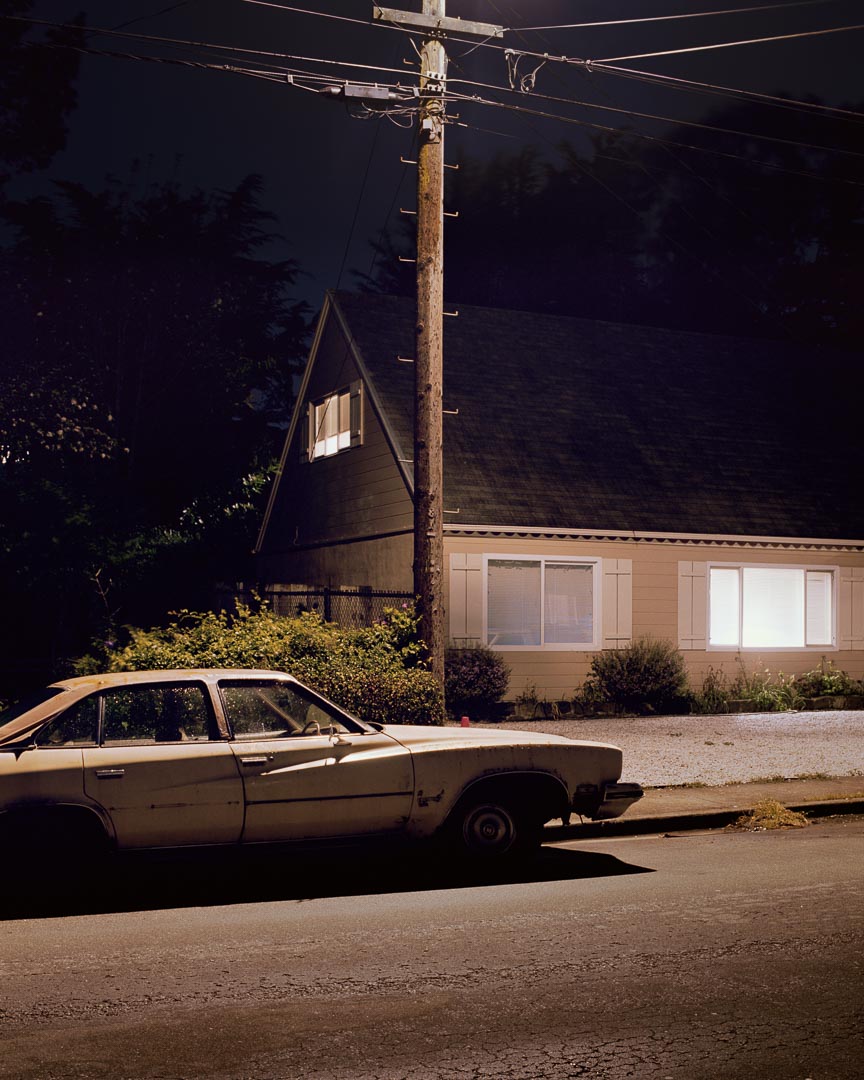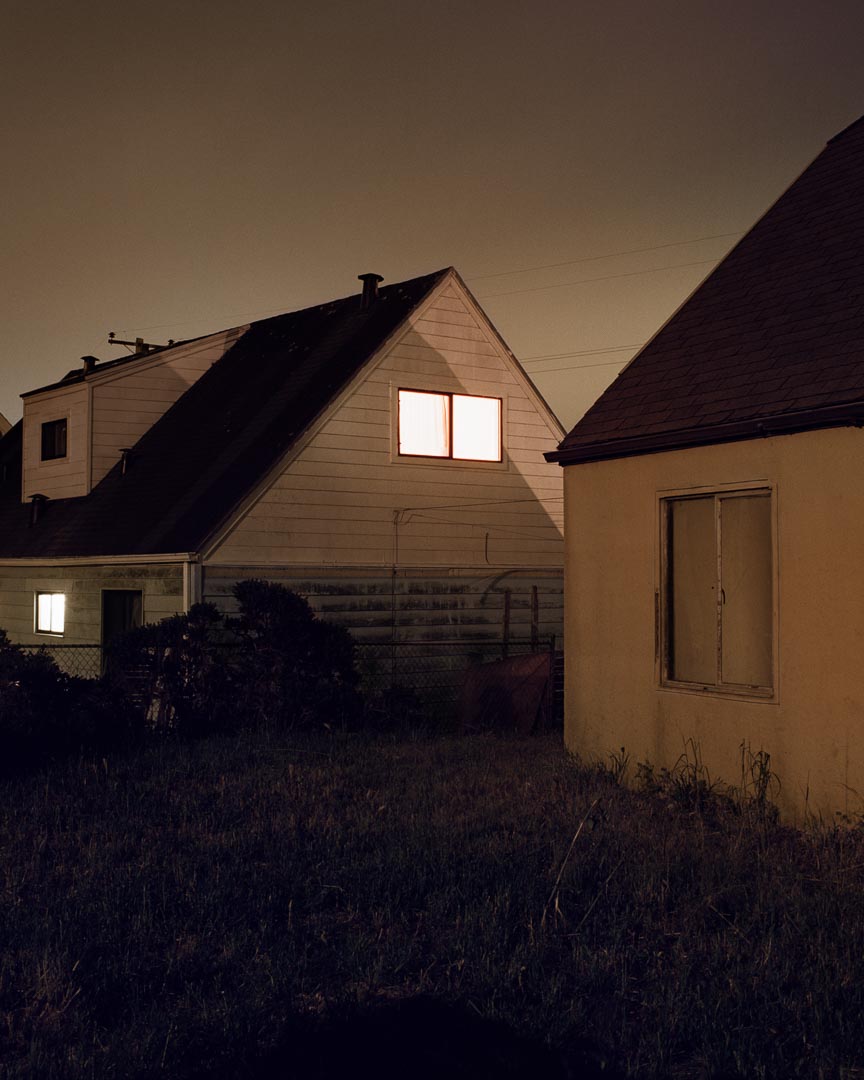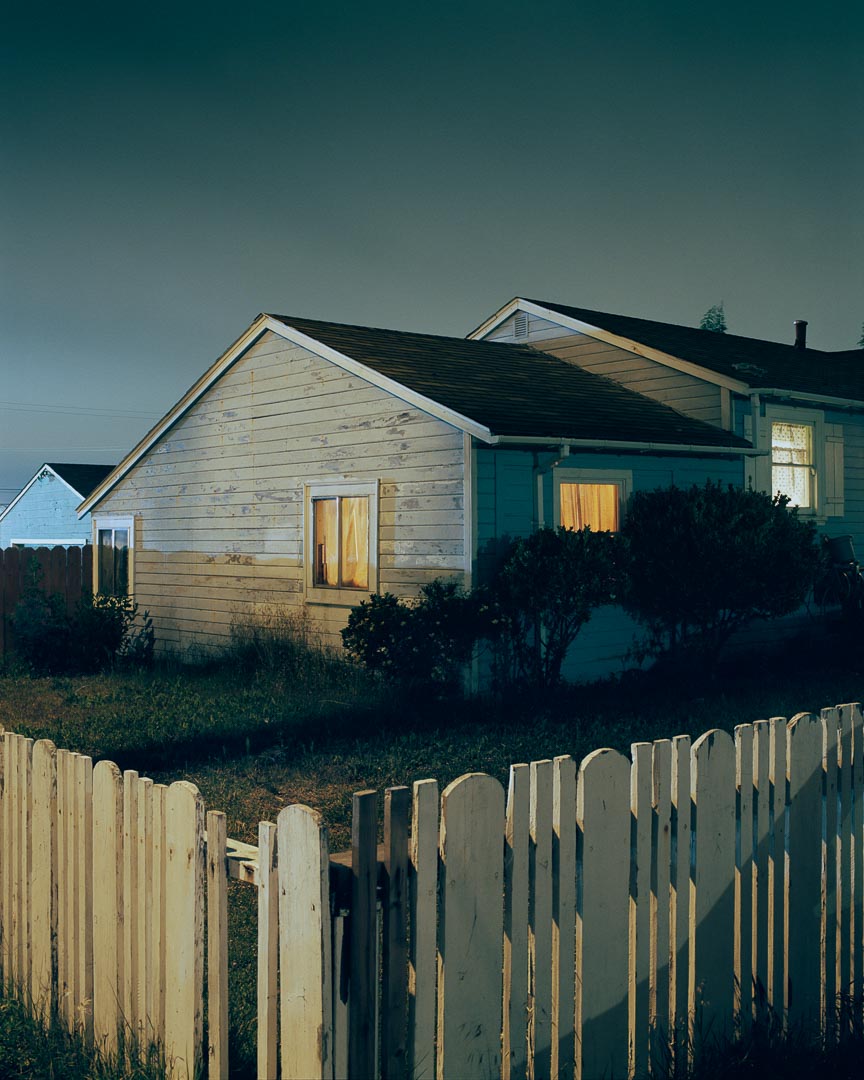Artist Blog
Every week an artist whose single image was published by Der Greif is given a platform in which to blog about contemporary photography.
The Imaged Landscapes of Todd Hido
Mar 20, 2017 - Stacy Mehrfar
“People sometimes describe my works as voyeuristic. Where I’m standing with the camera feels voyeuristic. I’m backed up far enough away so that we (I and the viewer) are decidedly at a distance from the house. We’re back across the street, on the sidewalk — a safe looking distance. Maybe we’re not too close because we’re not supposed to be there. I’ve always used this odd distance that communicates, ‘I’m not from there’. Viewers feel that distance and actually become more aware of my presence as a photographer/voyeur. I place them in the same position — a position that encourages a certain type of looking.” —Todd Hido, On Landscapes, Interiors, and the Nude
I was lucky. Many years ago I had the opportunity to assist Todd Hido when he taught a class on night photography at the International Center of Photography, in New York. Hearing him speak about his practice was eye opening. His first book, House Hunting (Nazraeli Press, 2001), portraits of suburban homes and apartments mostly photographed at night, can be seen as antithetical to the image of the American dream.
Hido’s photographs invite the viewer to contemplate solitary imaged landscapes. The photographs in Houses at Night often leave the spectator feeling overwhelmed by a sense of unease, of tension, as if something has just occurred or is lurking in the shadows. Most often shot at night, and always absent of the physical presence of people, Hido mostly avoids a straightforward look onto the ‘photographic event’ — the camera placement usually associated with documentary photography — rather he predominately places his camera at an angle and from a distance. This perspective creates a particular viewpoint onto the imaged landscape. As Anthony LaSala writes: “Either smothered in fog and haze, bathed in awkward orange light or radiating an uneasy feeling about the people hiding within, the images don’t simply entice gazes, but also raise questions.”(1) Hido’s camera perspective positions the viewer’s gaze as voyeur, effectively encouraging “a certain type of looking.”
The colour, light, and this compositional perspective meld together to produce a gaze emanating from the image, suggesting to the viewer a feeling of being on the outskirts. The viewer is then left to contemplate the consequence of what may have occurred (or may soon occur) in the imaged space. Hido speaks eloquently about his photographs: “that’s the thing that resonates with me in the landscape pictures; they reflect how the mind works. They’re a metaphor for memory.”
1. Anthony LaSala, “Todd Hido’s Haunted Houses,” Photo District News 21, Issue 10 (Oct 2001), 44.







